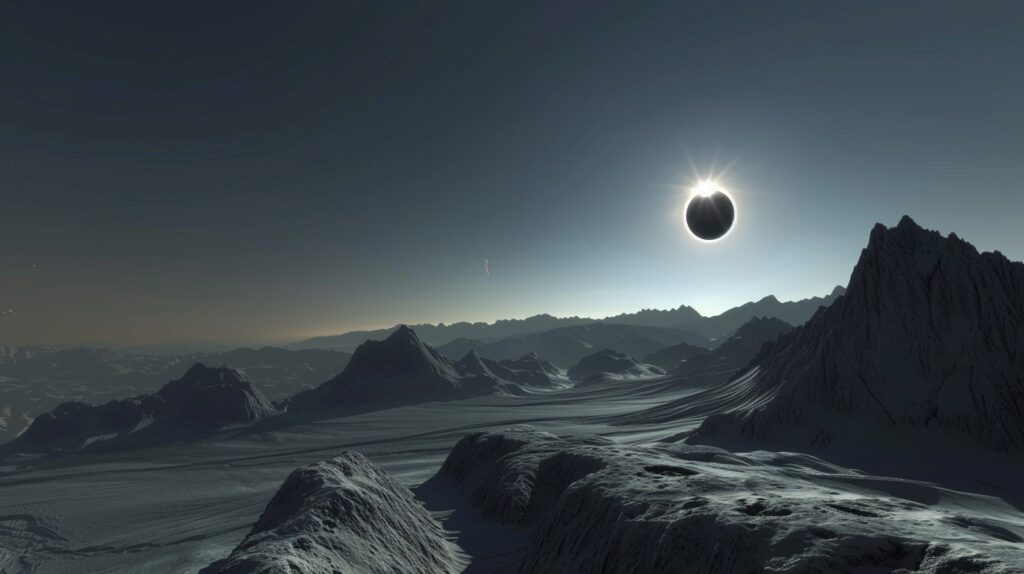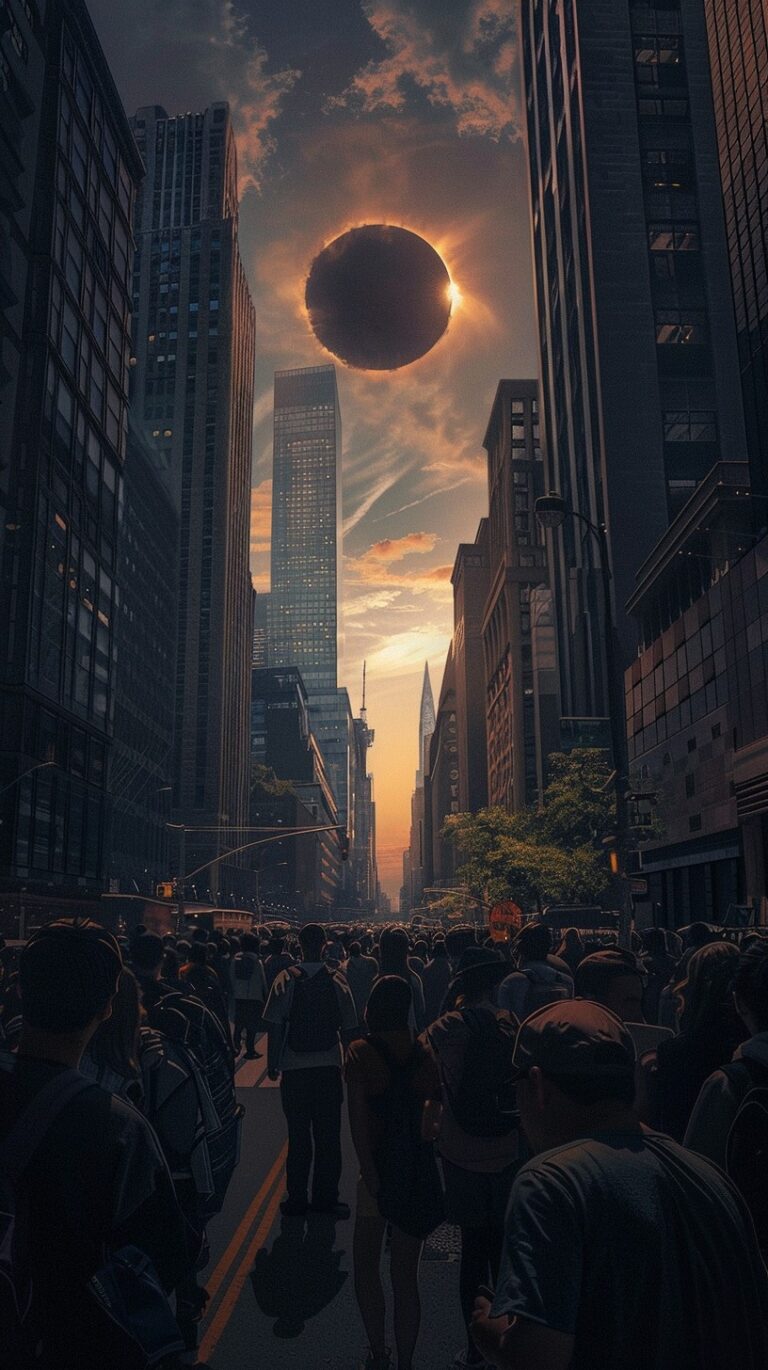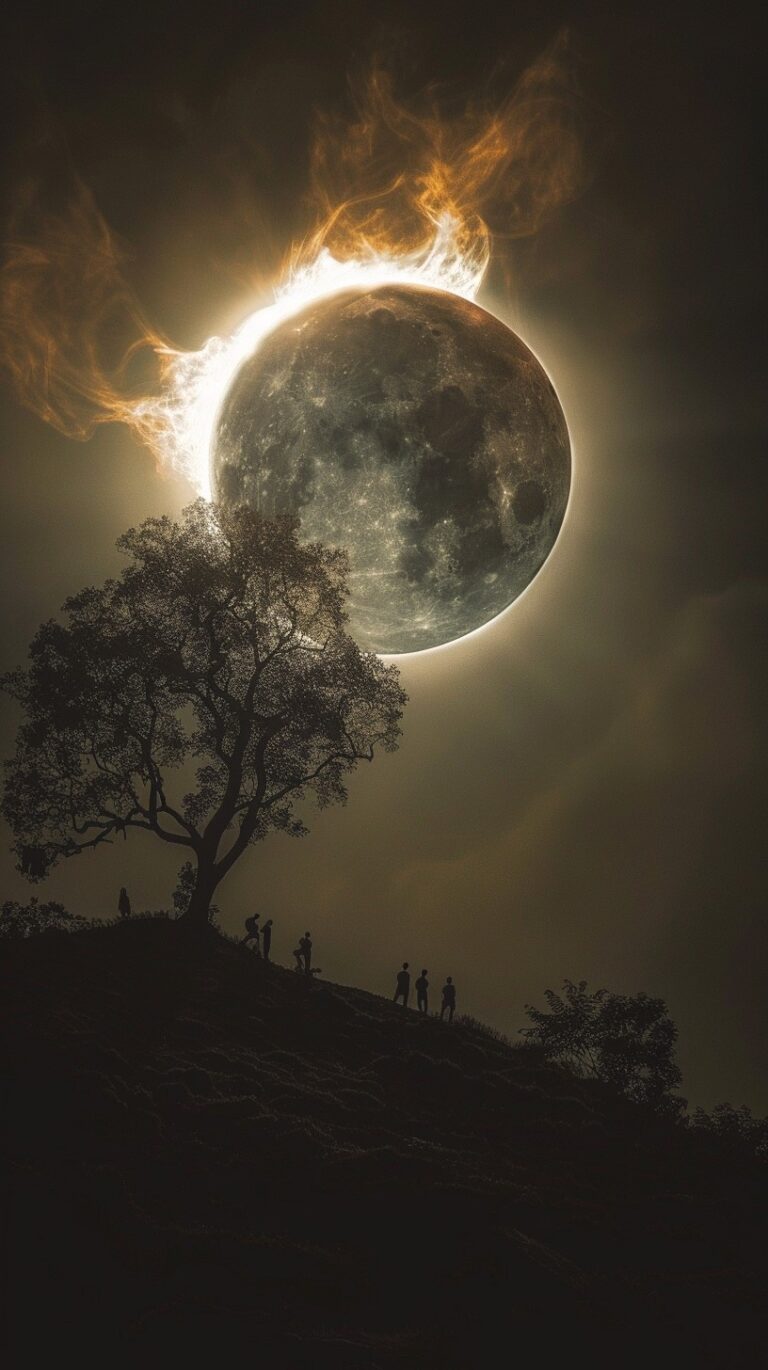America Braces for April 8 Total Solar Eclipse, but Weather Poses Challenges

On April 8, 2024, a total solar eclipse will captivate the United States, offering a rare opportunity to witness the awe-inspiring celestial event. Millions of Americans are expected to flock to the path of totality, a 150-mile wide strip stretching approximately 2,500 miles from Texas to Maine. However, historical weather patterns suggest that many hopeful viewers may face the challenge of overcast skies, potentially obscuring their view of the darkened midday sky.
The last total solar eclipse to traverse the continental United States occurred on August 21, 2017, when viewers from Oregon to South Carolina were treated to a spectacular display under mostly clear summer skies. The 2024 event, however, takes place during the more unpredictable spring season, raising concerns about the possibility of widespread cloud cover along the eclipse path.
Path of Totality Draws Crowds, but Clouds Loom

The path of totality will pass through parts of 13 states, including major cities like San Antonio, Austin, Dallas-Fort Worth, St. Louis, and Cleveland. These areas are expected to draw large crowds eager to experience the eclipse in its full glory. The duration of totality will vary along the path, with the longest period of darkness, approximately 4 minutes and 28 seconds, occurring near Torreón, Mexico.
According to Mike Augustyniak, CBS Minnesota director of meteorology, “At any given time, 70% of the earth is covered in clouds.” This statistic, combined with the current El Niño pattern, albeit quieter than usual, may increase the chances of cloudy and rainy weather along the eclipse path. The El Niño phenomenon, characterized by warmer-than-average surface temperatures in the eastern Pacific Ocean, can alter global weather patterns and influence cloud formation.
Despite these challenges, many communities along the path of totality are preparing to welcome visitors with eclipse-themed events and festivities. From watch parties to educational programs, local authorities and organizations are working to ensure that the eclipse remains a memorable experience for all. Some cities, such as Rochester, New York, are hosting multi-day festivals featuring live music, science presentations, and telescope viewings.
Best Bets for Clear Skies: Head South or Pray for Luck
Meteorologists suggest that those seeking the highest probability of clear skies should head south, particularly to the Texas Hill Country or western Texas. These regions offer the most favorable odds for an unobstructed view of the eclipse, with historically lower cloud cover percentages during early April. However, spring storms remain a concern, and viewers may need to be prepared for last-minute adjustments to avoid clouds.
In the Midwest, southern Illinois and Indiana present the best opportunities for clearer skies. These areas, including the city of Carbondale, Illinois, which lies along the path of totality for both the 2017 and 2024 eclipses, have a slightly better chance of favorable viewing conditions compared to their northern counterparts.
The Chicago metro area and its surrounding suburbs face a 60-80% chance of cloud cover based on historical averages, making it more challenging for residents to catch a glimpse of the eclipse without traveling. Similarly, the Great Lakes region, including Cleveland, Erie, and Niagara Falls, may encounter difficulties due to the presence of lake-effect clouds, which form when cold air passes over the relatively warm waters of the Great Lakes.
New England states face the most daunting odds, with historical patterns suggesting a higher likelihood of cloud cover during early April. Cities like Burlington, Vermont, and Portland, Maine, will need a bit of luck to experience clear skies during the eclipse. However, a glimmer of hope lies in the potential for the atmosphere to stabilize as totality approaches and temperatures drop, which could lead to a decrease in cloud cover.

Eclipse Chasers Remain Optimistic, Future Events Beckon

Despite the weather concerns, eclipse enthusiasts remain optimistic about their chances of witnessing the celestial spectacle. Many have planned their trips years in advance, carefully selecting locations along the path of totality that offer the best balance between accessibility and historical weather patterns. These dedicated “eclipse chasers” are prepared to travel considerable distances and navigate last-minute weather changes to secure the best possible viewing experience.
For those who find their view obscured by clouds on April 8, there is still hope for future eclipse-viewing opportunities. In August 2045, another total solar eclipse will traverse the United States, stretching from northern California to Miami Beach. This event, occurring during the more stable summer months, may offer a higher likelihood of clear skies and favorable viewing conditions.
As anticipation builds for the 2045 eclipse, enthusiasts and astronomers alike will undoubtedly begin planning their journeys to witness the celestial wonder. The 2045 event will also provide an opportunity for a new generation of eclipse chasers to experience the thrill and awe of totality, potentially sparking a lifelong passion for astronomy and celestial events.
A Celestial Spectacle, Weather Permitting

The April 8, 2024, total solar eclipse promises to be a breathtaking celestial event, captivating millions of Americans along its path of totality. While historical weather patterns suggest that cloud cover may pose challenges for some viewers, the allure of witnessing the darkened midday sky remains strong. Communities along the eclipse path are gearing up to welcome visitors, offering a range of events and activities to celebrate the occasion.
As the date of the eclipse approaches, interest in the event will continue to grow, with media outlets providing extensive coverage and updates on weather conditions. Viewers will be closely monitoring forecasts, hoping for clear skies and the chance to experience the eerie darkness and breathtaking corona that accompany totality.
Whether blessed with clear skies or faced with the task of navigating around clouds, those who gather along the path of totality will undoubtedly share in the collective excitement and awe of this rare astronomical occurrence. The 2024 total solar eclipse serves as a reminder of the wonders of our universe and the power of celestial events to unite people in shared amazement and curiosity.



